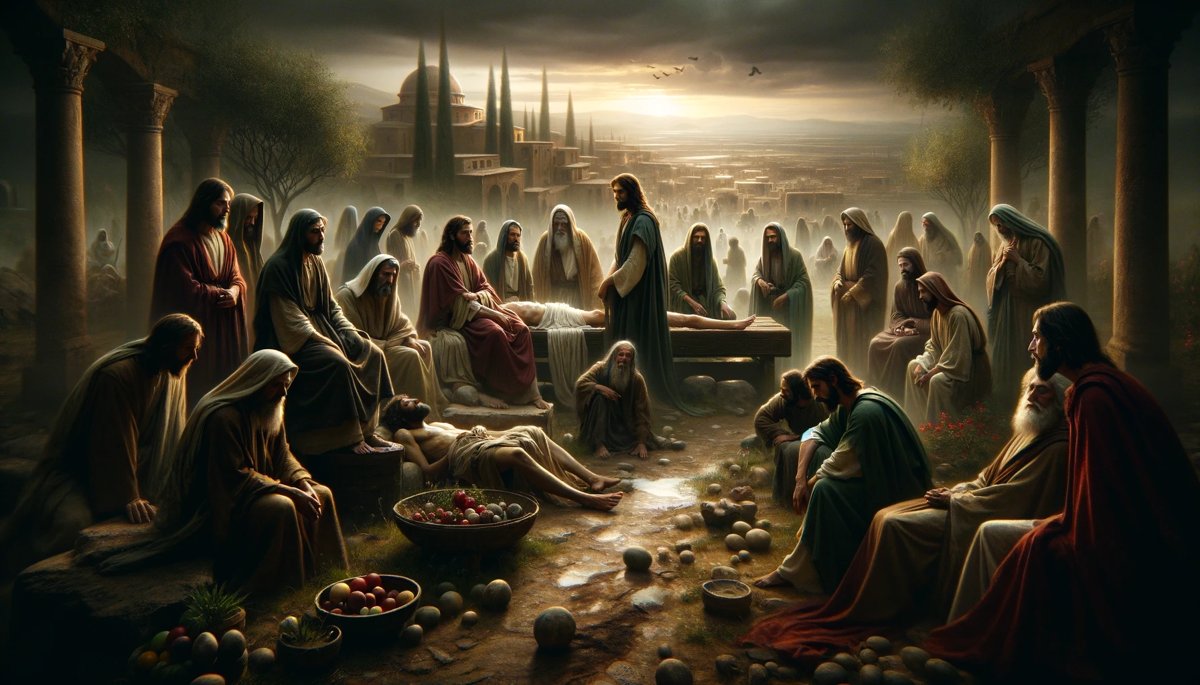The exploration of sacrifice in religious narratives often unveils profound truths about devotion, identity, and the quintessential human experience. In the Bahá’í Faith, the deaths of Christ and the Báb serve as pivotal moments that resonate deeply with followers and provide a unique lens through which to ponder the question: What would you die for? This inquiry transcends mere physicality and delves into spiritual convictions, ethical frameworks, and the profound values an individual holds dear.
The figure of Jesus Christ stands as a paramount example of sacrificial love and selflessness. His crucifixion symbolizes the ultimate surrender for a greater good—the redemption of humanity. It is crucial to underscore that this act was not merely about death; it represented an unparalleled commitment to a cause beyond oneself. In the Christian narrative, Christ’s last words illustrated the profound struggle of the human spirit when faced with persecution and death. His sacrifice became the fulcrum of Christian faith, evoking patterns of altruism, compassion, and unconditional love that continue to resonate centuries later.
In stark parallel, the Báb, the herald of Bahá’u’lláh, also encountered a martyr’s fate, underlining a similar thematic reverberation. His execution was not solely an end, but rather a catalyst that ignited a movement toward spiritual awakening and social transformation. As a manifestation of God, the Báb’s death epitomizes the struggle against oppression and the fervent pursuit of truth. In his martyrdom, he invites followers to contemplate the extent to which they would go to uphold their beliefs, thus provoking reflections on sacrifice, justice, and commitment to social principles.
To contemplate the deaths of these two pivotal figures is to engage with the concept of ‘dying for a cause’. This notion extends beyond the physical act of martyrdom; it prompts a contemplative lens through which to evaluate personal dedication. Are we prepared to endure hardships, confront societal injustices, or engage in transformative activism anchored by our convictions? The essence of sacrifice lies not merely in the act itself but in the intrinsic motivations that propel individuals toward such profound decisions.
The juxtaposition of Christ’s and the Báb’s sacrifices reveals a shared ethos of courage and resilience. Each represents a willingness to confront the darkness of ignorance and the chains of tyranny, serving as vicars of hope for their respective faiths. The Bahá’í perspective invites believers to see in these narratives a call to action—a dialogue that transcends mere anecdote and manifests in tangible societal contributions. In recognizing the overarching themes of their deaths, believers are urged to foster a deep and abiding commitment to the principles of justice, unity, and the transformative power of love.
Moreover, the examination of what one would die for also serves to elucidate the complex interplay between personal sacrifice and collective evolution. Individual actions, however small, have the potential to contribute to a larger tapestry of societal change. In the Bahá’í context, this appeal to personal sacrifice embodies the principle of selflessness—an urging to place the welfare of humanity above personal desires. The teachings implore followers to embody the attributes of service, humility, and reverence for all creation. In this light, the candid question of what one would die for morphs into an inquiry about what one is willing to live for.
The process of reckoning with one’s values is not always met with ease. It necessitates a sustained engagement with essential inquiries. What principles are we willing to advocate for vigorously? What injustices invoke within us a response that compels us to act? The legacies left behind by Christ and the Báb illustrate that the impact of one’s life, informed by steadfast choices, can serve as a beacon for others—a light in a tempestuous world. Each believer is called to ascend the dais of service while navigating the tumultuous waters of egoism and indifference, driven by a fervor for the betterment of humanity.
Indeed, the teachings encourage a profound reflection on sacrifice that intertwines with love for humanity. The death of Christ provides a lens through which to witness unconditional love manifested in the struggle against sin, while the Báb’s martyrdom encapsulates the transformative potential of unwavering faith. Both figures symbolize not only the price of truth but also the promise that earnest pursuits of justice and unity can yield a collective awakening to a higher purpose.
In conclusion, the poignant narratives surrounding the deaths of Christ and the Báb challenge adherents to assess their readiness to embrace sacrifice for the sake of truth and justice. What would you die for? This searing question evokes contemplation that transcends the confines of one’s life. It urges an examination of love, service, and responsibility towards a struggling world. Ultimately, the invitation beckons to embody ideals that illuminate the path of service to others while fostering a harmonious existence grounded in shared humanity. The reflections on sacrifice compel each individual to live with lionhearted resolve, inspiring not only their own spiritual journey but also curating a legacy of profound impact on the world stage.
